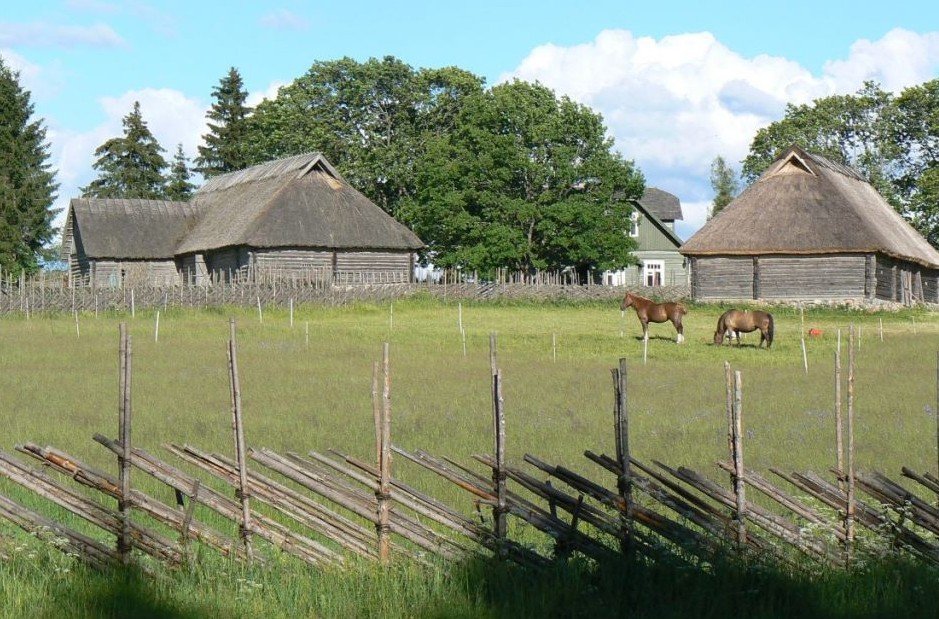An Estonian literary classic, Anton Hansen Tammsaare’s “Truth and Justice” is going to be published in English for the first time.
While Estonia has in the last few years become internationally better known for its musical heritage, its literature is almost unheard of – simply because so little has been published in English, the most universally spoken language in the world. But the good news is that this is about to change.
The last few years have seen some books by Jaan Kross being published in the UK and the US. The Estonian folklore epic, “Kalevipoeg”, has been recently translated into English for the second time by Estonian-Australian Triinu Kartus. Novelists Mati Unt and Toomas Vint have been finally discovered by Anglo-American publisher Dalkey Archive Press. Young poet Kristiina Ehin – in recent times the most successful Estonian poet abroad – was recently touring Canada and the US, presenting her poetry and stories in English. Thanks to her translator, Ilmar Lehtpere, twelve of her books have been published in English. There’s also a mission underway to translate the work of Marie Under – Estonia’s most influential poet – into English. Now, the Stockholm-based Haute Culture Books is planning to put to print Anton Hansen Tammsaare’s “Truth and Justice”.

Haute Culture Books is a publishing start-up founded by French-Portuguese novelist Luis de Miranda, whose connection to Estonia goes back some time – a few years ago he finished his last novel in Estonia, published in France under the title “Qui a tué le poète?”. After completing his novel, de Miranda wanted to pay homage to the land that inspired him and thought that the best way to do it would be to translate an Estonian literary classic into English. “I first thought of translating Karl Ristikivi, but then Ilvi Liive of the Estonian Literature Centre told me about Tammsaare. I read the book in French and felt it was of universal importance. I also found it very strange that Tammsaare’s “Truth and Justice” had yet to be translated into English, hence my choice,” said de Miranda who despite now living in Stockholm claims to have retained a certain physical, as well as a spiritual closeness to Estonia.
De Miranda’s first goal is to publish “Andres and Pearu”, the first autonomous volume of “Truth and Justice”. “Some Tammsaare specialists told me he wrote it as an independent story, without thinking he would write further volumes. The first edition of “Truth and Justice”, volume 1, does not say “volume 1” on the cover. The subtitle we have chosen for it is “Andres and Pearu”. One only needs to call two men “Andres and Pearu” for any Estonian to understand the nature of their relationship,” de Miranda explained.
Although there are certainly a number of Estonians who think that “Truth and Justice” lacks universal appeal, de Miranda disagrees.
“Many Estonians think this is a book about Estonia and is of no interest to the rest of the world. I believe that to be an insult to the genius of Tammsaare. Any serious writer writes for what he believes to be the universal reader. For example, although it seems deeply rooted in Estonian peasant life, the first volume deals with timeless literary and philosophical issues, developing a vigorous, straightforward narrative that addresses the dual nature of the human psyche,” de Miranda elaborated.

“Volume 1 presents life in an Estonian village, as farmers battle against nature during the last quarter of the 19th century. The two main characters, both unique and powerful men, represent the essential conflicts of human nature: not only good vs evil, but also hope vs conservatism and conquest vs pettiness. The saga explores how human impulses compete with each other and complete the characters. Although the first volume seems entirely dedicated to peasant life in rural Estonia at the threshold of modernity, the book deals with fundamental issues that are quite relevant today. “Truth and Justice” is a story of simple people who work the land endlessly, striving to build a world were truth and justice prevail, where good is fostered and protected, not killed by conformity or lack of courage. Beautiful things grow slowly like plants. Perhaps this is a lesson for all the speedy capitalists of the world and to people who no longer believe in patient hard work for the sake of truth and beauty.”
Despite the scepticism of some, Haute Culture Books’ mission has also already found plenty of approval from Estonia and beyond – the Tammsaare Museum, Estonian Ministry of Culture, National Library of Estonia, Tartu University Library and Stanford University Library in the US have all thrown their support behind the project.
De Miranda’s plan is to publish limited exclusive editions of up to 500 hardcopies of the book, and in turn these would finance the distribution of thousands of e-books for free.
But De Miranda needs more support to accomplish this mission. “Despite the moral support of many, we also need extra financial support to publish it, which is why we have turned for Hooandja and Kickstarter to raise funds. In our model, people subscribe to the book by pre-ordering it. These benefactors or ‘Book Angels’ sponsor the limited art edition for three reasons: they’ll receive one copy for themselves, they’ll have their name acknowledged in the book and finally they’ll allow the digital edition to be distributed for free. We need Book Angels to allow Tammsaare to receive the editorial justice I believe he deserves,” de Miranda explained.
EstonianWorld.com is proud to support such a great initiative of presenting Estonian cultural heritage and is encouraging our readers and followers to help take “Truth and Justice” to the world stage. You can support this project on Hooandja (in Estonian).
I
Truth and Justice
Truth and Justice I-V, written in 1926–1933, is a pentalogy by Anton Hansen Tammsaare (1878-1940), considered to be his most famous work, and one of the foundational works in Estonian literature. Tammsaare’s social epic captured the evolution of Estonia from Tsarist province to independent state. It was based partly on the author’s own life and centered on the contrast between the urban middle class and hard-working peasantry.
The book series can be seen as a thorough overview of developments of Estonian society from about 1870 to about 1930; it presents an epic panorama of both the rural and urban societies of that era. Tammsaare’s primary conception was that under the then-applicable conditions, reaching a harmony of both truth and justice is impossible, and thus, while many characters will seek it, none will reach this destination.
I
Cover photo: Anton Hansen Tammsaare’s former farm house, now a museum, in Järvamaa, Estonia.


I have translated the whole of Karl Ristikivi’s “Hingede öö” into English. They should ask me to offer my manuscript. I have translated and published three books by Jaan Kross in English translation, plus two by Mati Unt and one by Toomas Vint for the Dalkey Archive Press. I imagine that you are referring to me above.
Anyone know where one could possibly order a copy after it’s been published?
We hope to publish the book as soon as we can now. You can find more information about ordering a copy at http://www.hauteculturebooks.com/memberships